When diving into strength training as a beginner, simplicity is key to building strength effectively. No need for fancy techniques—just stick to the basics, stay consistent, and be patient. At the start, those initial exercises may seem tough, making you eager to fast-track muscle growth to avoid the struggle. But remember, every effort counts towards progress. Starting with foundational moves targets every muscle group, gradually making them feel more manageable over time—proof that you’re getting stronger!
Once you’ve mastered the basics, it’s time to level up by increasing weights, trying variations, or introducing new exercises. Unsure where to begin? We’ve got you covered, detailing the benefits of muscle building and outlining essential exercises for beginners, ensuring a solid start to your strength journey.
How to train to get stronger?
To achieve greater strength, focus on compound movements that engage multiple joints and muscles simultaneously. Multi-joint exercises like squats and push-ups activate various muscle fibers, offering comprehensive muscle development. Balancing pushing and pulling exercises in your routine ensures muscular equilibrium and targets essential muscle groups effectively. Incorporating rows and chest presses, for instance, guarantees balanced muscle engagement and reduces the risk of joint strain.
Embrace a mix of pushing exercises such as squats, overhead presses, and push-ups, alongside pulling exercises like rows and pull-ups, to optimize strength gains and promote overall muscular balance and stability.
Effective Beginner Strength Training Exercises
1. Glute Bridge
Glute bridge, is a powerhouse exercise for targeting and strengthening the glute muscles, a key component of lower body strength. Here’s how to do it effectively:
- Begin by lying on your back with your knees bent and feet flat on the floor, about hip-width apart.
- Hold a dumbbell or barbell across your hips for added resistance, if desired.
- Engage your glutes and core muscles, then push through your heels to lift your hips off the ground until your body forms a straight line from your shoulders to your knees.
- Pause for a moment at the top of the movement, focusing on squeezing your glutes.
- Slowly lower your hips back down to the starting position to complete one repetition.
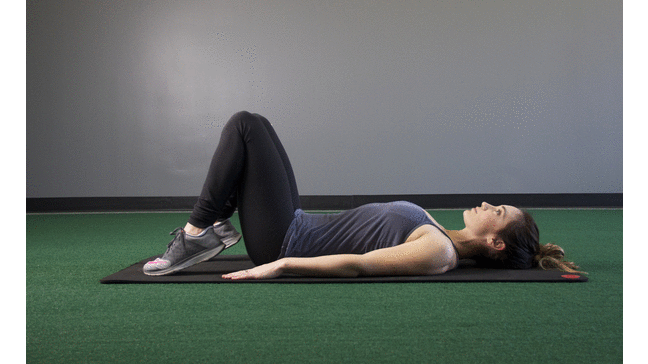
Perform this exercise with precise form and controlled movements to maximize its effectiveness in building strength and stability in your lower body. Ensure that your spine remains neutral, avoid overarching your back, and concentrate on engaging your glutes throughout the lift. Focus on a slow and deliberate pace, both on the ascent and descent, to fully activate the target muscles and reduce the risk of injury.
2. Hollow-Body Hold
The hollow-body hold is an exceptional full-body exercise that significantly enhances core stability. This foundational strength supports other key compound movements, such as pull-ups and deadlifts.
- Lie on your back on a mat, legs extended and arms straight overhead, keeping them close to your ears.
- Engage your core by pressing your lower back into the floor.
- Point your toes, squeeze your thighs together, and tighten your glutes.
- Lift your legs slightly off the ground.
- Raise your shoulders off the ground, maintaining a neutral head position to avoid neck strain. Your body should form a slight curve, resembling a banana, with only your lower back and hips in contact with the floor.
- Hold this position as long as possible while maintaining proper form.
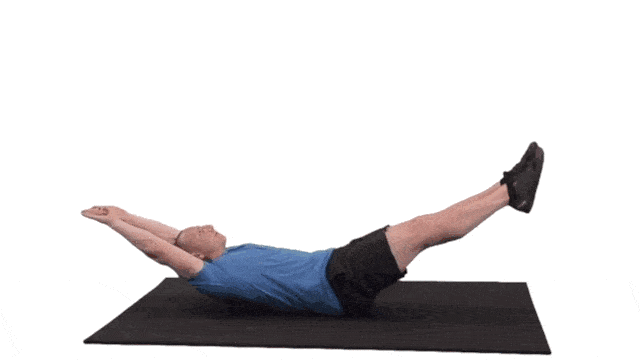
This isometric exercise targets the entire core. If the standard hollow-body hold is too challenging, modify it by bending your knees or extending your arms forward instead of overhead.
3. Deadlift
Deadlifts are universally hailed as one of the most effective exercises for targeting the posterior chain, particularly the glutes and hamstrings. Whether you opt for the Romanian, traditional barbell, or sumo variation, deadlifts offer unparalleled benefits for strengthening and sculpting your lower body. To perform a deadlift with proper form:
- Stand with your feet hip-width apart, knees slightly bent, and hold a dumbbell in each hand by the front of your quads.
- Hinge forward at your hips while maintaining a flat back and a slight bend in your knees. Lower the weights along your shins, keeping your torso almost parallel to the floor.
- Engage your core and push through your heels to return to the starting position, ensuring the weights remain close to your shins as you pull up.
- At the top of the movement, pause and squeeze your glutes before lowering the weights back down.

The deadlift primarily targets the hamstrings and glutes while also engaging the shoulders, back, and core. Focus on maintaining proper form throughout the exercise to protect your lower back and maximize its effectiveness.
4. Bent-Over Row
The bent-over row is a foundational exercise for strengthening the muscles of your upper body, particularly the back, shoulders, and biceps. This compound movement also engages your legs and core, promoting overall stability and strength. To perform the bent-over row with proper form:
- Stand with your feet hip-width apart, holding a dumbbell in each hand with your arms at your sides.
- Engage your core and hinge forward at the hips, pushing your butt back while keeping your back flat and your knees slightly bent.
- Maintain a neutral neck position by gazing at the ground a few inches in front of your feet.
- Pull the weights up toward your chest by bending your elbows and squeezing your shoulder blades together at the top of the movement.
- Ensure that your elbows stay close to your body and that your arms go past your back as you bring the weights toward your chest.
- Hold the contraction for 2 seconds before slowly lowering the weights back down toward the floor.
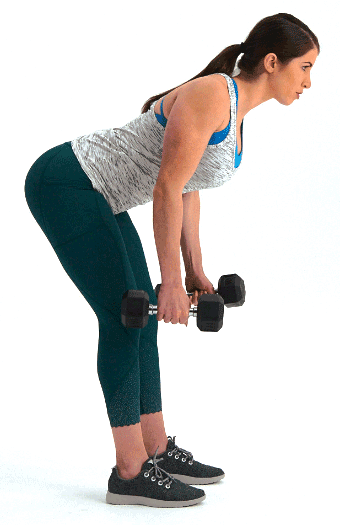
Focus on maintaining proper form throughout the exercise to maximize its effectiveness and minimize the risk of injury.
5. Dumbbell Chopper
Mastering rotational movements safely is essential for overall functional fitness. The woodchop exercise is an excellent introduction to rotational exercises, providing a safe and effective way to engage your core muscles while promoting spine mobility. To perform the rotational woodchop:
- Stand with your feet wider than hip-width apart and engage your core muscles.
- Hold a dumbbell or small towel (or just clasp your hands together) with both hands by your left leg.
- Raise the weight diagonally in front of your body to the upper right, allowing your torso and toes to naturally rotate to the right.
- “Chop” the weight down to the left, across the front of your body, aiming towards your left ankle. Focus on stabilizing your lower body and rotating from your core.
- Complete all repetitions on one side before switching to the other side.
- Maintain control throughout the movement to maximize its effectiveness and prevent injury.
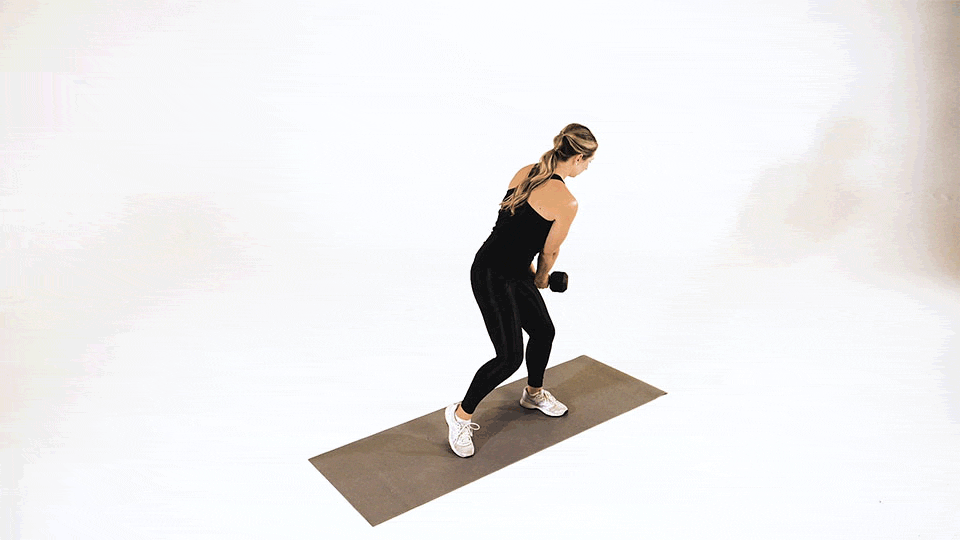
The rotational woodchop primarily targets the muscles of the core, particularly the obliques, while also engaging the legs and glutes. Additionally, this exercise can help elevate your heart rate, providing cardiovascular benefits alongside strength and stability gains.
6. Reverse Lunge
Single-leg exercises, like the reverse lunge, are essential for building strength and correcting muscle imbalances. Incorporating unilateral movements into your workout routine not only improves overall strength but also enhances core stability. To perform the single-leg reverse lunge:
- Stand with your feet shoulder-width apart and engage your core muscles for stability.
- Step backward with your right foot, landing on the ball of your foot while keeping your right heel off the ground.
- Bend both knees to a 90-degree angle as you lower into a lunge position. Focus on maintaining proper posture, with your core engaged and hips tucked.
- Push through the heel of your left foot to return to the starting position. Maintain control throughout the movement.
- Complete all repetitions on one side before switching to the other side.
- You can alternate sides or perform all reps on one side before switching, depending on your preference and workout goals.
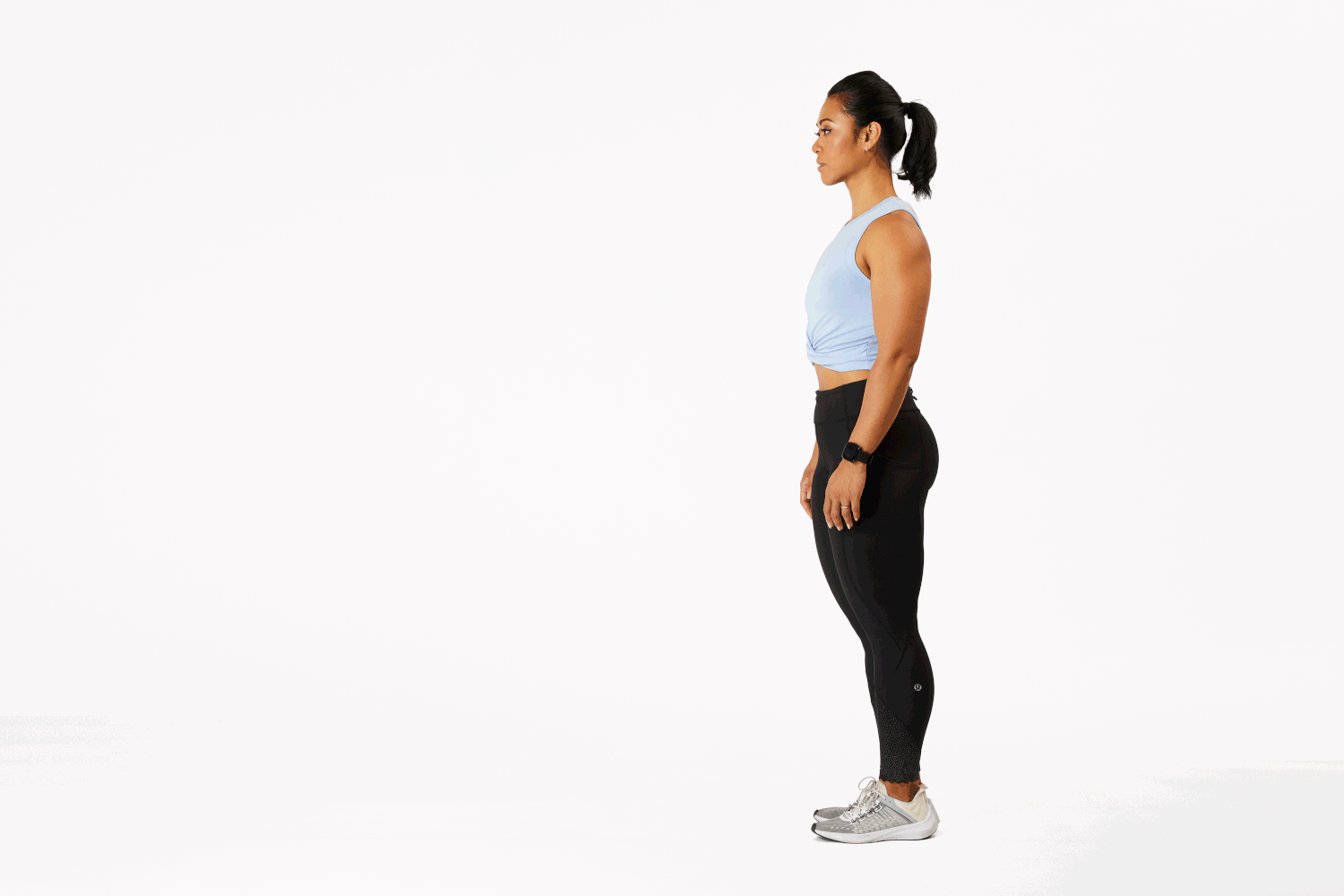
The single-leg reverse lunge targets the glutes, legs, and core muscles, providing a comprehensive lower body workout. It is generally gentler on the knees compared to forward lunges and offers improved balance and stability by leveraging momentum from the back foot.
7. Push-Ups
The push-up is a fundamental bodyweight exercise that builds upper body strength and endurance. By adjusting the elevation of your hands, you can modify the intensity of the exercise to suit your fitness level. To perform the elevated push-up:
- Start in a high plank position with your palms flat on an elevated surface, such as a step or a table. Your hands should be slightly wider than shoulder-width apart, and your shoulders should be directly above your wrists.
- Extend your legs behind you, resting on the balls of your feet, and engage your core and glutes to maintain a straight line from your head to your heels.
- Bend your elbows and lower your chest toward the elevated surface, keeping your body in a straight line.
- Lower yourself until your chest nearly touches the surface, or as far down as you can comfortably go.
- Push through the palms of your hands to straighten your arms and return to the starting position.
- That completes one repetition.
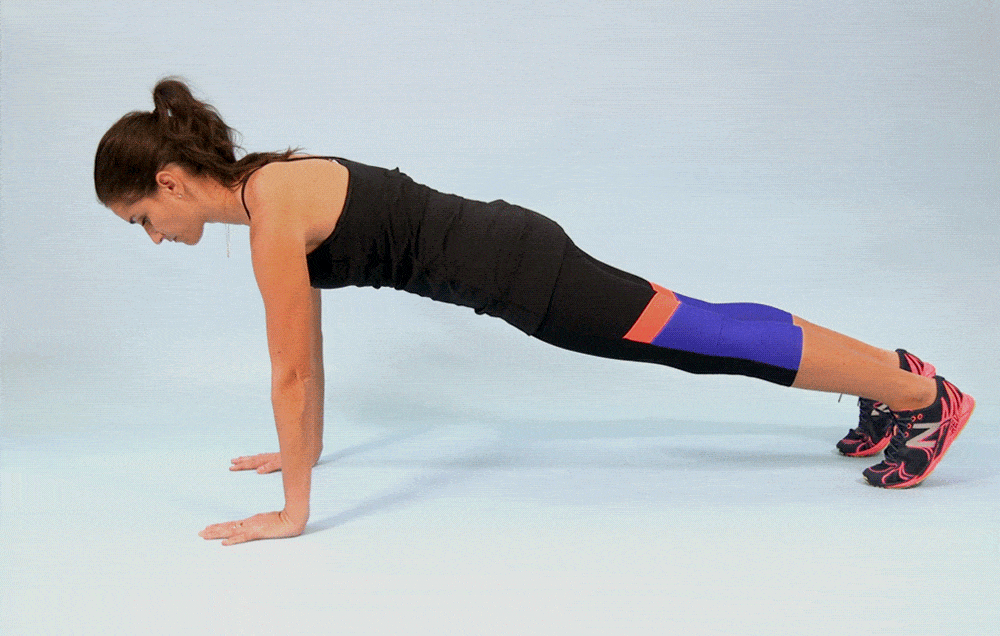
The elevated push-up targets the chest, shoulders, and triceps, making it an effective exercise for building upper body strength and muscle endurance. Adjusting the height of the surface allows you to gradually progress as you gain strength and confidence in your push-up technique.
8.Squat
The squat is a fundamental compound exercise that engages multiple muscle groups, making it an excellent exercise for building lower body strength and muscle mass. To perform the weighted squat:
- Stand with your feet slightly wider than hip-width apart, toes pointing forward or slightly outward.
- Hold a dumbbell in each hand, letting your arms hang down by your sides.
- Engage your core and keep your chest up as you initiate the movement by pushing your hips back.
- Bend your knees and lower your body down into a squat position, keeping your back straight and chest lifted.
- Continue descending until your thighs are parallel to the floor, or as low as your flexibility allows while maintaining proper form.
- Press through your heels to drive yourself back up to the starting position, fully extending your hips and knees.
- That completes one repetition.
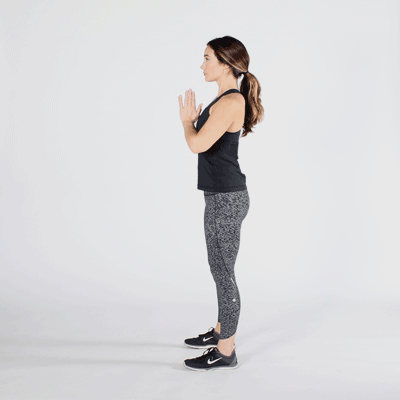
Throughout the movement, focus on keeping your heels flat on the ground and your knees tracking in line with your toes to prevent them from collapsing inward. Remember to maintain a neutral spine and avoid rounding your back.
9. Pull-Ups
Pull-ups are a challenging upper-body exercise that target the back and biceps, utilizing your body weight as resistance. While they may seem daunting, there are ways to gradually build up to performing unassisted pull-ups. To do assisted pull-ups:
- Begin by setting up an assisted pull-up machine or securing a resistance band to a pull-up bar.
- If using an assisted pull-up machine, adjust the weight to an appropriate level where you can perform a controlled movement.
- If using a resistance band, loop it over the pull-up bar and place one foot or knee into the band to provide assistance.
- Grasp the pull-up bar with an overhand grip, hands slightly wider than shoulder-width apart.
- Hang from the bar with your arms fully extended, engaging your core and keeping your body in a straight line.
- Initiate the pull-up by driving your elbows down and back, pulling your chest towards the bar.
- Continue pulling until your chin clears the bar or you reach your desired range of motion.
- Slowly lower yourself back down to the starting position with control.
- That completes one repetition.
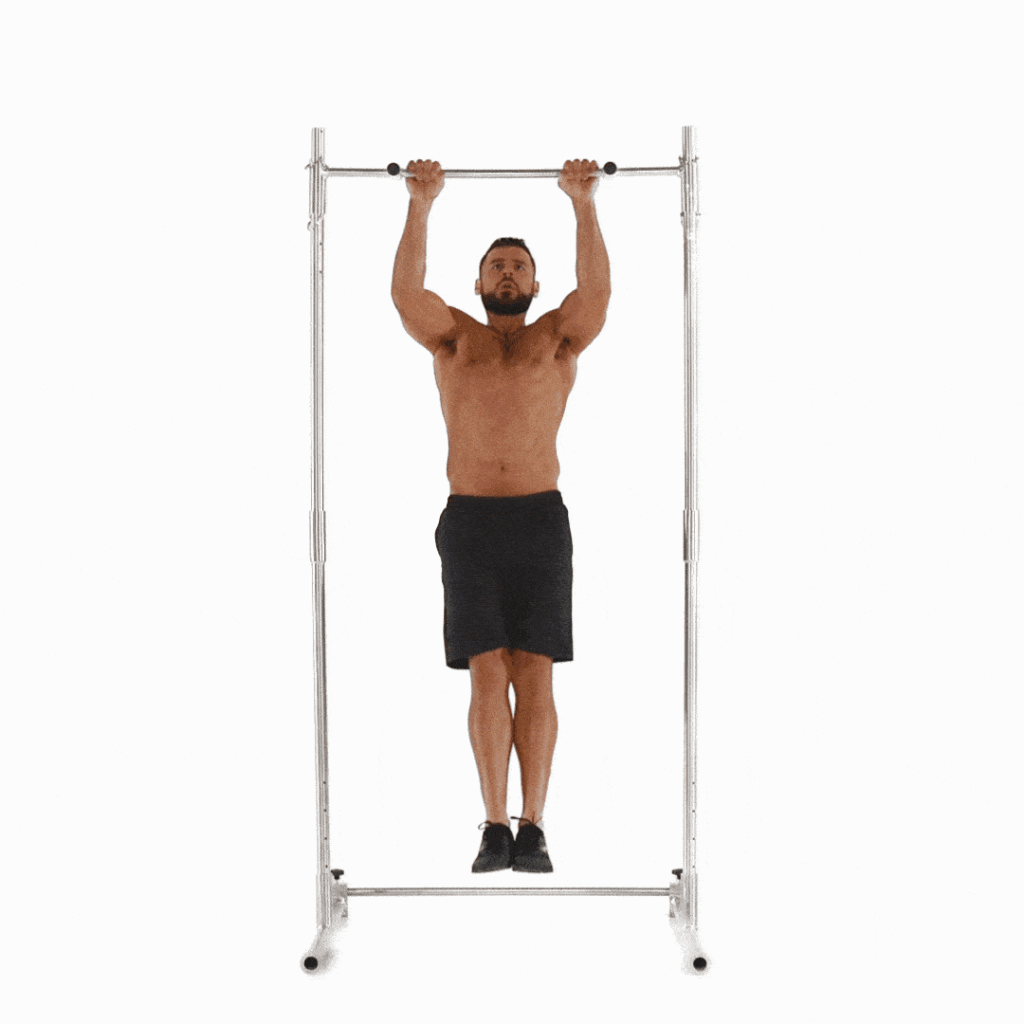
Focus on maintaining proper form throughout the exercise, keeping your shoulders down and back, and avoiding swinging or kipping motions. As you gradually build strength and proficiency, you can decrease the assistance provided by the machine or resistance band until you can perform unassisted pull-ups.
10. Planks
The plank is a foundational exercise that targets the core muscles while also engaging the upper and lower body. Mastering the plank not only strengthens your core but also improves overall posture, contributing to greater confidence and poise. To perform a plank:
- Start by positioning yourself face down on the floor, propped up on your forearms and toes.
- Your elbows should be directly beneath your shoulders, and your forearms should be parallel to each other.
- Engage your core muscles by drawing your navel towards your spine and maintaining a straight line from your head to your heels.
- Avoid sagging your hips or lifting your buttocks too high.
- Hold this position for as long as you can while maintaining proper form.
- Aim to build up to holding the plank for at least one minute before progressing to more challenging variations.
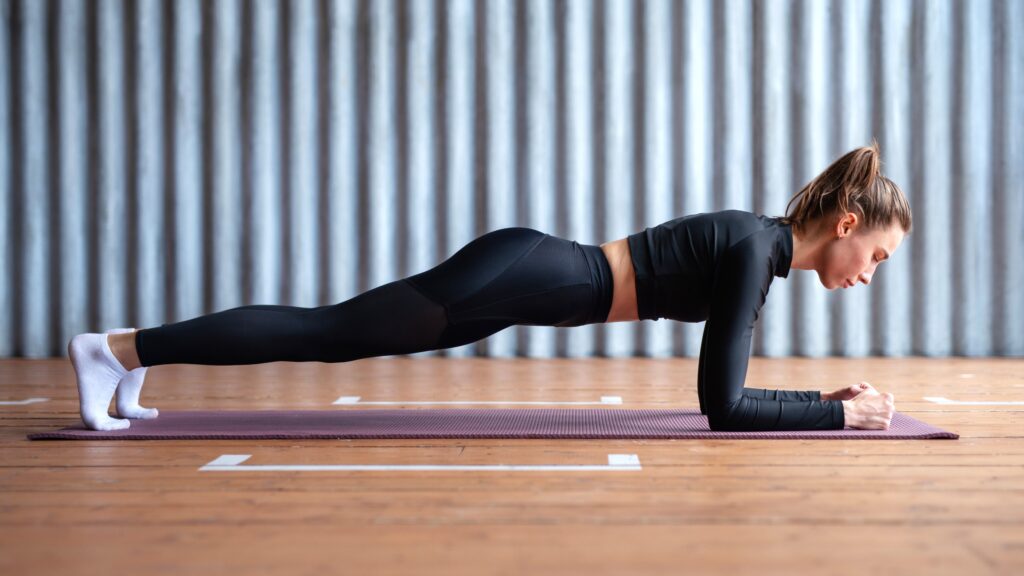
Incorporate plank exercises into your routine to build core strength, improve posture, and enhance overall physical performance.
Conclusion
Strength training for beginners doesn’t have to be complex or overwhelming. By focusing on fundamental exercises that target multiple muscle groups, you build a solid foundation for increased strength and muscle development. Incorporate these essential exercises into your routine, stay consistent, and gradually challenge yourself with added weights or variations. Remember, progress comes with time and persistence. Embrace the journey, celebrate your improvements, and keep pushing forward towards your strength goals.